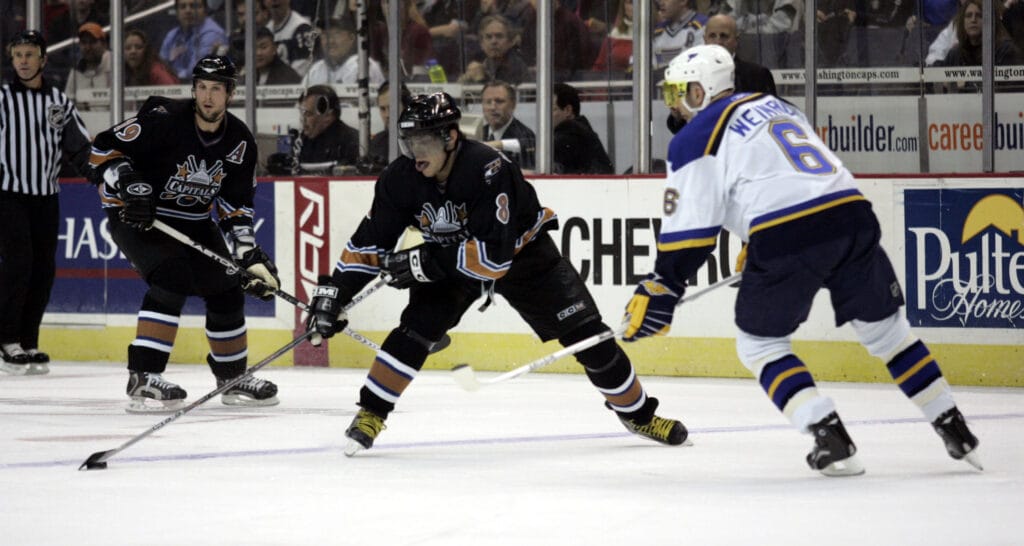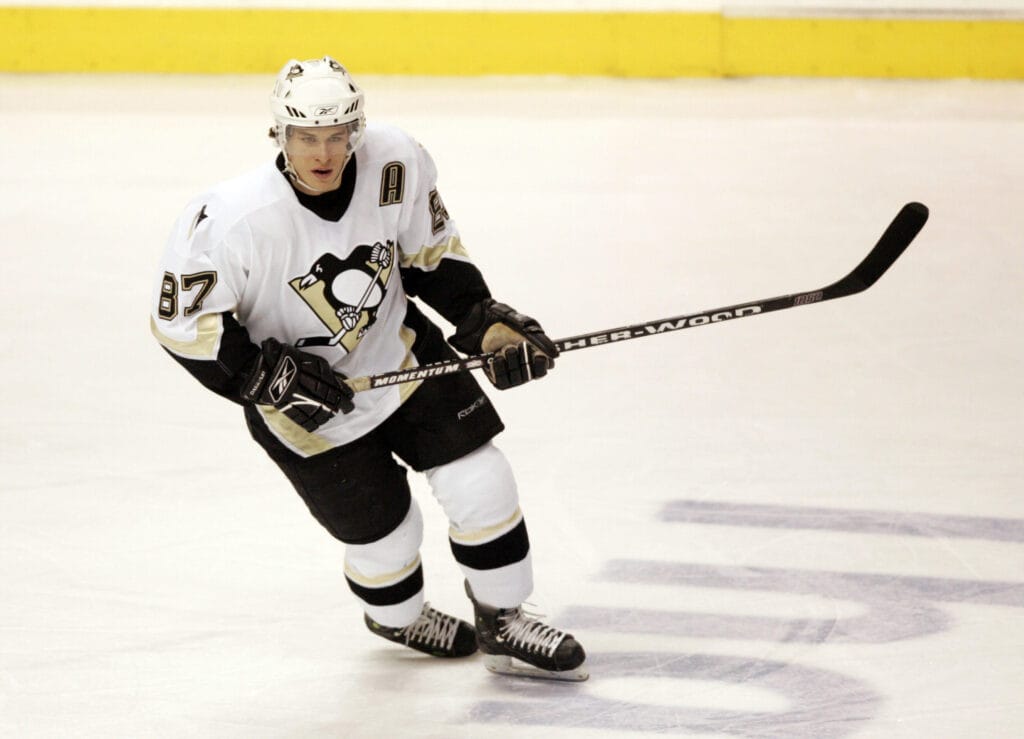© 2025 ALLCITY Network Inc.
All rights reserved.

Coyotes forward Logan Cooley was aware of Regina Pats star Connor Bedard long before the Chicago Blackhawks selected Bedard as the No. 1 overall pick in the 2023 NHL Draft.
“You keep an eye on every good prospect coming up,” said Cooley, who came up with the United States National Team Development Program and the University of Minnesota. “With all the international tournaments you play in like the U18s and the World Junior [Championship], everyone knows everyone anyway once you get to this high level.”
There is plenty of hype surrounding those international tournaments, but it’s nothing compared to the NHL stage. That’s why Monday night will be special. While most of the early-season rookie attention has been focused on Bedard — perhaps to a fault — Cooley will get the opportunity to share that spotlight when the Blackhawks face the Coyotes on Monday at Mullett Arena. This is the first meeting between the two players who lead BetMGM’s odds for the Calder Trophy as NHL Rookie of the Year.
Cooley admits that playing other top players adds a little juice to his blood, but it’s not as pronounced as you might think.
“I’m a 19-year-old kid playing in the NHL so that’s enough of a challenge,” Cooley said. “I’m preparing every night to be ready to go every night so it’s just another game.”
While Bedard and Cooley are the headliners of this rookie class, they are not the only players staking a claim in this Calder race. Toronto forward Matthew Knies, Columbus center Adam Fantilli and New Jersey defenseman Luke Hughes are among the strong contenders, but none of those players is even leading the rookie scoring race half a month into the season. That honor belongs to Ottawa center Ridly Greig (two goals, seven points in eight games) and Philadelphia forward Bobby Brink (two goals, six points in seven games).
The long list of names in contention has some analysts calling this the most competitive Calder Trophy race in NHL history.
“I was impressed with Matthew Poitras in Boston, too, so you’ve got some real depth here,” said TNT lead analyst Ed Olczyk. “Obviously, you’ve got an age discrepancy with a couple of guys who are older rookies, but that’s going to happen in any year. I’m looking forward to seeing a lot of these guys in person, not just on TV, but it sure seems like the team picture for rookie of the year has gotten a little wider than maybe what most people thought at the start of the season.”

Olczyk was the Pittsburgh Penguins coach when perhaps the best Calder Trophy race in NHL history got off the starting blocks. The season-long NHL lockout had canceled the entire 2004-05 season, preventing 2004 No. 1 overall pick Alex Ovechkin from making his debut with the Washington Capitals. When he finally did step on the ice, 2005 No. 1 overall pick Sidney Crosby was there to contest the trophy.
“We were in the middle of a rebuild and the Caps were as well and all of the sudden they’re playing head-to-head.” Olczyk said. “I think what made it so much fun to be a part of it was that there was a rivalry between the two teams that had been around a long time so that that aided the dislike and the competitiveness between two guys who both franchises and the league were counting on to carry the torch for the next 15 or 20 years.”
Crosby and Ovechkin were entirely different players. Crosby had a strong two-way game and played with a skill and grace reminiscent of the great centermen before him such as Mario Lemieux and Wayne Gretzky. Ovechkin was a bull; a true power forward with an in-your-face approach and one of the deadliest shots in NHL history.
“With that tinted shield that we wore, Ovi looked like a video game,” said Tampa Bay Lightning assistant coach Jeff Halpern, who was the Capitals’ captain when Ovechkin arrived. “He did things on the ice that honestly, I don’t think the league saw enough of because there wasn’t enough coverage back then.
“Ovi killed people. I specifically remember one moment with Adam Mair, who was a big, solid center in Buffalo. He came out on a change while Ovi was still in a puck battle. Mair skated as hard as he could to run Ovi and at the last second, Ovi just dropped his shoulder and buried him. We saw that kind of stuff every night. We kept waiting for a quote-unquote Canadian guy to set him straight and knock him on his ass, but Ovi would score goals and run over people night after night.”

The Canadian-Russian element added to Crosby-Ovechkin rivalry. There were still stereotypes about Russian players being soft and, much as it is today with Bedard, Canadian players tended to get the benefit of the doubt, and the lion’s share of the hype.
“Crosby was this polished, Canadian boy-next-door kind of guy and Ovi was like an animal that you let out of a cage,” Halpern said. “If Crosby was American, it might have been a little different, but the fact that he was Canadian, there was a big push for him to do well and get attention.
“Those first Hockey Night in Canada games weren’t geared towards Ovechkin in the way that they were geared towards Crosby. Ovi didn’t have the set-up that Crosby did and there was definitely this stereotype of a European hockey player. There was a little bit of a bias of like, ‘He’s not Canadian so he won’t be able to play that kind of game.’ But Ovi didn’t care. He looked at whoever he wanted, however he wanted. He’d wink at people and then he’d back it up by running them over.”
While Crosby and Ovechkin were rarely on the ice for the same shift, those around them knew that they were both keenly aware of the rivalry.
“Sid is a student of the game who knows the history of the game and respects the history of the game,” Olczyk said. “He understood how important the rivalry was for the teams and for the league. There were expectations for both players to help take their franchises to the top — Sid back to where the Penguins were when they were winning their Cups and Ovi to put the Caps over the top and be an elite scorer. All these years later, they obviously both delivered.”

Bedard and Cooley do not have the Russian-Canadian split to fuel their rivalry, but there is a fair rivalry between the US and Canada to replace it. There is another parallel as well.
Like Crosby, Bedard is charged with getting the Blackhawks back to where they were when they were winning three Stanley Cups from 2010-2015. Like Ovechkin, Cooley is charged with getting a team that has never tasted much playoff success to the top in a market even more unheralded than DC. He also grew up idolizing Ovechkin, even though he was raised near Pittsburgh.
Like Crosby, Bedard is a student of the game. Aside from playing against Cooley in international tournaments, he has watched him play since the Coyotes center hit the NHL stage.
“I saw that goal he scored in Australia,” Bedard said, smiling. “That was pretty nasty.
“I try to watch a lot of teams, but obviously he’s a guy that’s fun to watch along with a lot of guys on their team so I’ve watched him a little bit. He really looks comfortable out there and obviously, he’s just got so much skill. He’s a special player and he’s having a great start to the season so I’m excited to play him.”

All the same, Bedard is not circling this game on the calendar as any more meaningful than the others.
“It’s not a me vs. him thing. It’s us vs. them,” Bedard said. “We’re focused on trying to win this game just like we’re focused on winning every game. I want to play the best I can against every team so that doesn’t really add much.”
Two and a half weeks into his first season, and three days after he logged a season-low 11:33 of ice time, Cooley has greater areas of focus than a rivalry that is, at this point of his career, largely manufactured.
“Overall, it’s been pretty good,” Cooley said of his start, “but obviously it’s a tough transition from college to the NHL. We’re still seven games in. There’s still a heck of a lot of season left so I’m honestly just taking it game by game and day by day and just trying to get better.”
Top photo via Getty Images
Comments
Share your thoughts
Join the conversation



